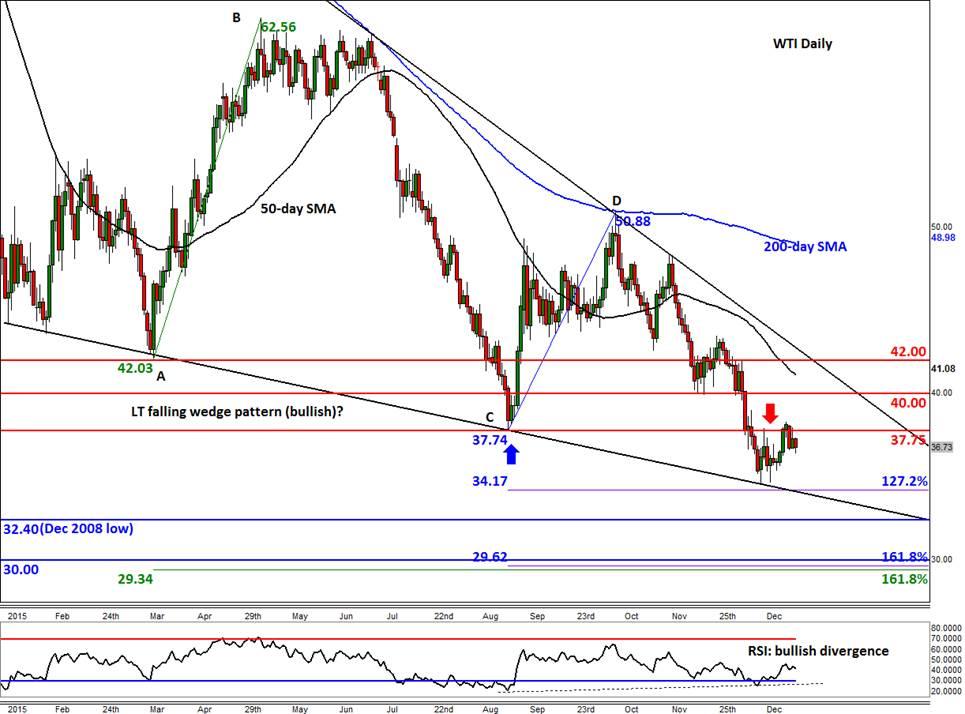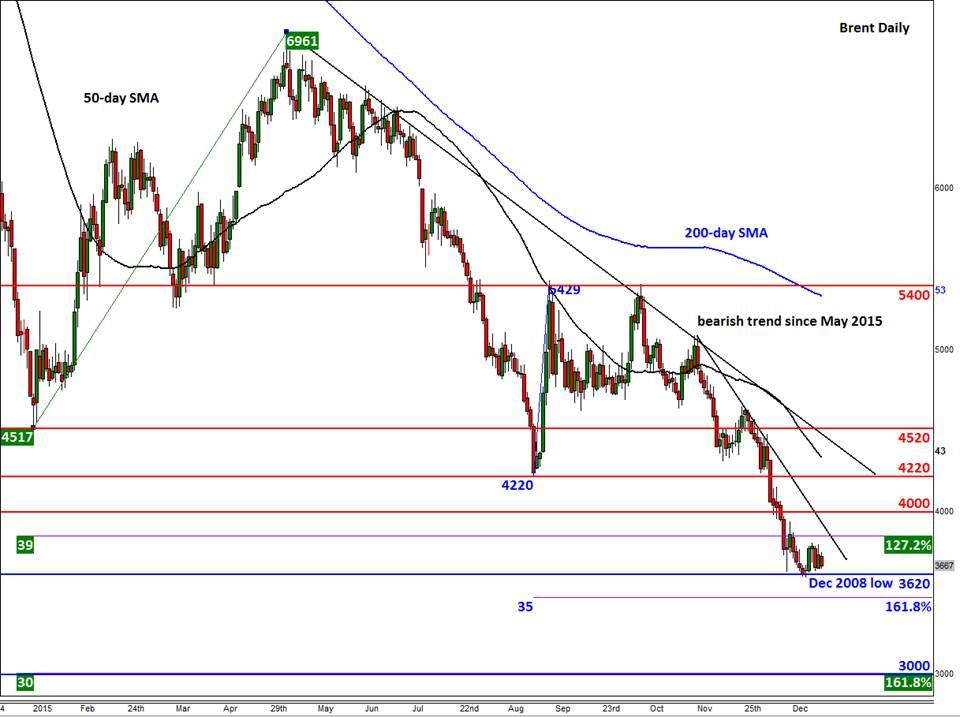![]()
Yesterday’s sharp rally in oil was halted, with WTI giving up its entire gains before the official weekly crude stockpiles report was released today. Evidently, traders were unnerved by the American Petroleum Institute’s (API) inventories report that was released last night, which showed a surprisingly large build of 2.9 million barrels when a small draw was expected. The US Depart of Energy reported similar numbers today, with total crude oil stockpiles rising by 2.6 million and distillate inventories 1.8 million barrels. Crude stocks at Cushing rose 0.9 million barrels to a record level.
As most of the bad news was already priced in after the API had reported similar numbers last night, US oil extended its losses only moderately post the official data. Nevertheless, with US production growing for the last few weeks and global inventories being near storage limits this is yet another reminder that the supply glut could take a long time to clear which may mean even lower oil prices in the near term. In fact, Saudi Arabia is already planning for lower oil prices next year after the leading OPEC producer announced measures to boost non-oil revenues and cut spending. To make matters worse, Iran is ready to pump at least 500 million barrels of the stuff per day more as soon as Western sanctions on its oil are lifted, possibly in early 2016.
So, the outlook for crude oil heading into 2016 is not looking great. But the second half of the year could see WTI rise as some of the weaker oil producers in the US are forced out of the market amid the persistently weaker prices. When and at what price level will oil bottom out is a million dollar question, but for now at least there’s still no end in sight for this protracted bear trend in crude.
Yesterday’s gains also looked to have been driven mainly by sellers taking profit on their positions rather than actual buying. That’s because the downward pressure waned slightly last week as Brent tested its December 2008 low and WTI held its own above some short term support levels. But WTI was unable to move above the previous support at $37.75, and so traders were happy to sell the rally there. For as long as US oil holds below this level on a daily closing basis, the very short-term outlook will remain bearish. The next support for WTI is around $34.00/34.15, and area which corresponds with the 127.2% Fibonacci extension level of the most recent downswing and the support trend of a potential falling wedge pattern. Below that level is the December 2008 low at $32.40 and then the next psychologically important handle of $30.00 where we will also have a couple of Fibonacci extension levels converging. But if WTI manages to break decisively above the $37.75 resistance then the next stop could well be at $40.00, with the possibility of an eventual rally towards the resistance trend of the wedge pattern around $42.00.
Brent meanwhile is hovering dangerously around the December 2008 low of $36.20. For the London-based oil contract, the next level to watch below here is the 161.8% extension level of the short-lived bounce we saw at the end of August, at $34.70. Then there is little further support until the next psychological level of $30, which also corresponds with the 161.8% extension of the larger bounce from the end of January/start of February. If Brent were to get to $30, we would therefore expect to see a bounce at the very least. On the upside, Brent faces several resistances including the bearish trend lines shown on the chart, the psychological $40 level and previous support at $42.20.
Figure 1:
Figure 2:
Trading leveraged products such as FX, CFDs and Spread Bets carry a high level of risk which means you could lose your capital and is therefore not suitable for all investors. All of this website’s contents and information provided by Fawad Razaqzada elsewhere, such as on telegram and other social channels, including news, opinions, market analyses, trade ideas, trade signals or other information are solely provided as general market commentary and do not constitute a recommendation or investment advice. Please ensure you fully understand the risks involved by reading our disclaimer, terms and policies.
Recommended Content
Editors’ Picks
EUR/USD clings to gains above 1.0750 after US data

EUR/USD manages to hold in positive territory above 1.0750 despite retreating from the fresh multi-week high it set above 1.0800 earlier in the day. The US Dollar struggles to find demand following the weaker-than-expected NFP data.
GBP/USD declines below 1.2550 following NFP-inspired upsurge

GBP/USD struggles to preserve its bullish momentum and trades below 1.2550 in the American session. Earlier in the day, the disappointing April jobs report from the US triggered a USD selloff and allowed the pair to reach multi-week highs above 1.2600.
Gold struggles to hold above $2,300 despite falling US yields

Gold stays on the back foot below $2,300 in the American session on Friday. The benchmark 10-year US Treasury bond yield stays in negative territory below 4.6% after weak US data but the improving risk mood doesn't allow XAU/USD to gain traction.
Bitcoin Weekly Forecast: Should you buy BTC here? Premium

Bitcoin (BTC) price shows signs of a potential reversal but lacks confirmation, which has divided the investor community into two – those who are buying the dips and those who are expecting a further correction.
Week ahead – BoE and RBA decisions headline a calm week

Bank of England meets on Thursday, unlikely to signal rate cuts. Reserve Bank of Australia could maintain a higher-for-longer stance. Elsewhere, Bank of Japan releases summary of opinions.